
Cal Poly Pomona Bee Seminar
March 31, 2018
P. Michael Henderson
Cal Poly Pomona put on another Bee Seminar. They had one in November (see here) that I attended and found it a good learning experience - so I decided to attend this one, also.
I'm going to jump ahead and show the apiary at Cal Poly Pomona. It's on what used to be a dump area. I assume the land could only be used for something like bees or for maybe growing things. In any case, it makes a good apiary.

But back to the seminar. They had a very good turnout, especially considering it was the day before Easter and many people travel for Easter. I was told that the seminar was limited to fifty people, and it certainly looked like there were at least fifty there.
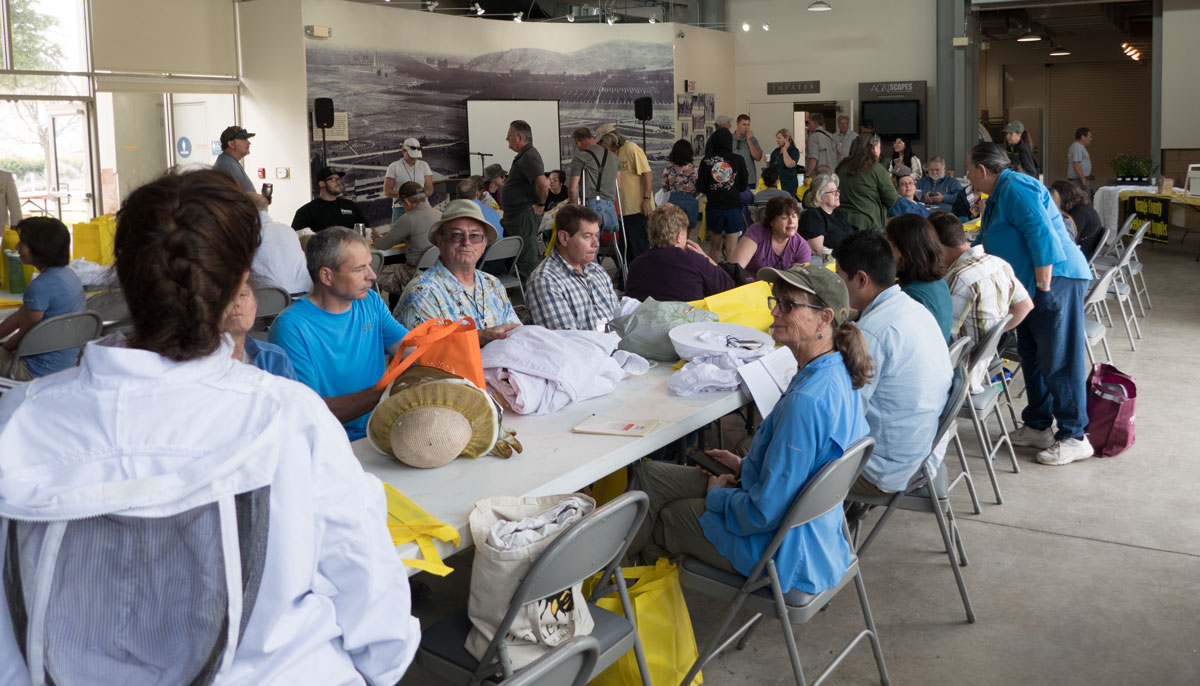
The person who organized the seminar was Mark Haag, the head Apiarist at Cal Poly.

They were well prepared this seminar, with enough (new) bee suits for everyone, and in all sizes.

The presidents of all the local bee clubs were in attendance, which demonstrated strong support for the program. I didn't get their names - sorry.
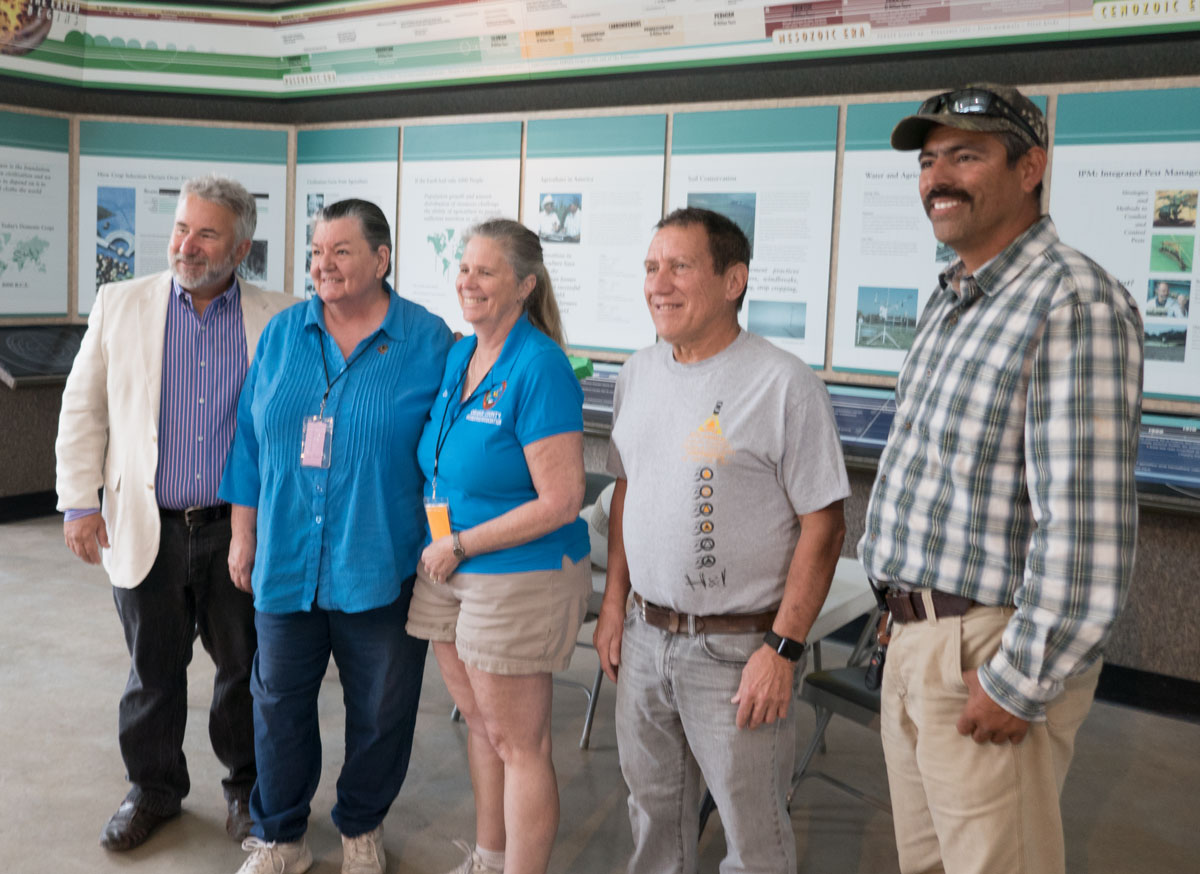
After the preliminaries, we suited up and headed out to the apiary.

There were five groups and five stations. Two of the stations, station 4 and 5, had alternate, more advanced sessions. I attended those two alternate sessions. I'll describe the sessions as I attended them. The first session was with Sean Crowley, a commercial beekeeper who keeps feral bees. He gives a very "information rich" presentation - so much that you'll almost surely not remember everything. He talked about how he fuels and lights his smoker, what foundation he uses, the types of boxes, tops, and bottoms he uses, how he deals with ants, and a lot more.
His presentation was essentially the same as he gave for the previous seminar so I had heard most of it. But he gives so much it was good to hear it again.
Note that many of the students have their veils on, even though there were no bees anywhere near Sean's presentation. Just jumping the gun a bit:-)

The next presentation was on mites and treatment. Dr. Melody Wallace, who teaches at Cal Poly Pomona, gave the presentation.

She demonstrated two ways of checking for mites, the powered sugar method and the alcohol method.
For the powered sugar technique, she took a half cup of bees (about 300 bees) and put them in a jar with a mesh top. Then she spooned powered sugar into the bees and shook the jar. This caused the mites to fall off of the bees.
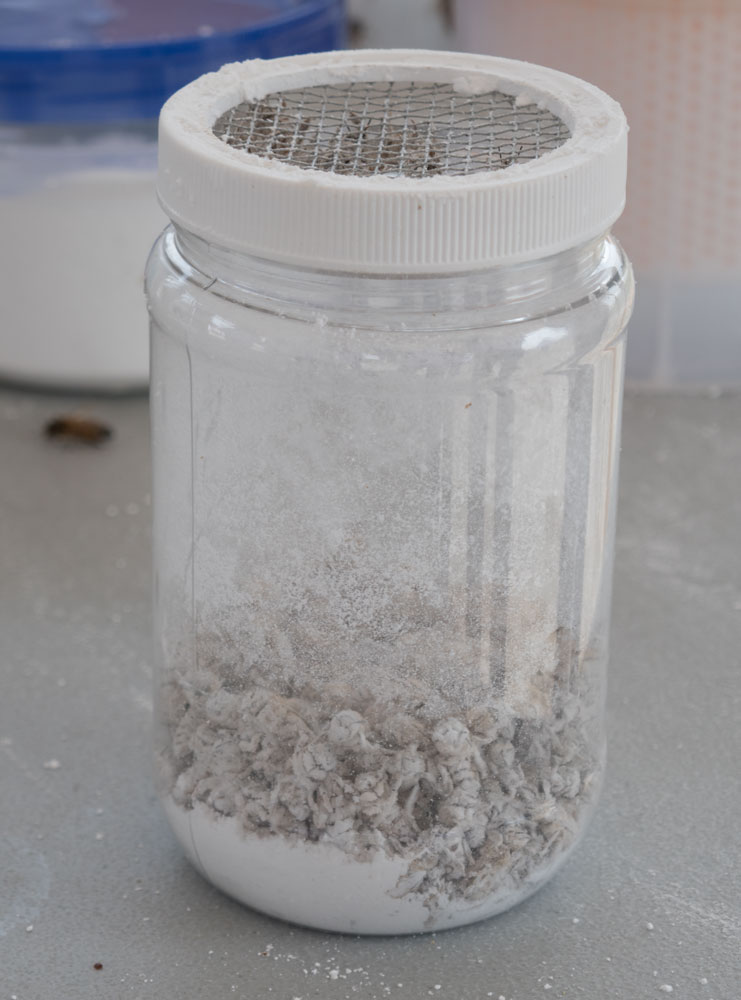
She then shook the powered sugar into a white pan (white so the mites would show up well), and then spritzed the sugar with water to remove the white color of the powered sugar so the mites would show up better. This hive had a LOT of mites. The sugared bees were returned to the hive where their sisters would remove the sugar from them.

For the alcohol technique, a half cup of bees are placed in a container and then alcohol is pored into the container, killing the bees and the mites. Swirling the container causes the mites to fall to the bottom, where they can be counted. We knew this hive had a lot of mites from the powered sugar technique and that was proved out by this alcohol technique. You can see the mites at the bottom of the container.
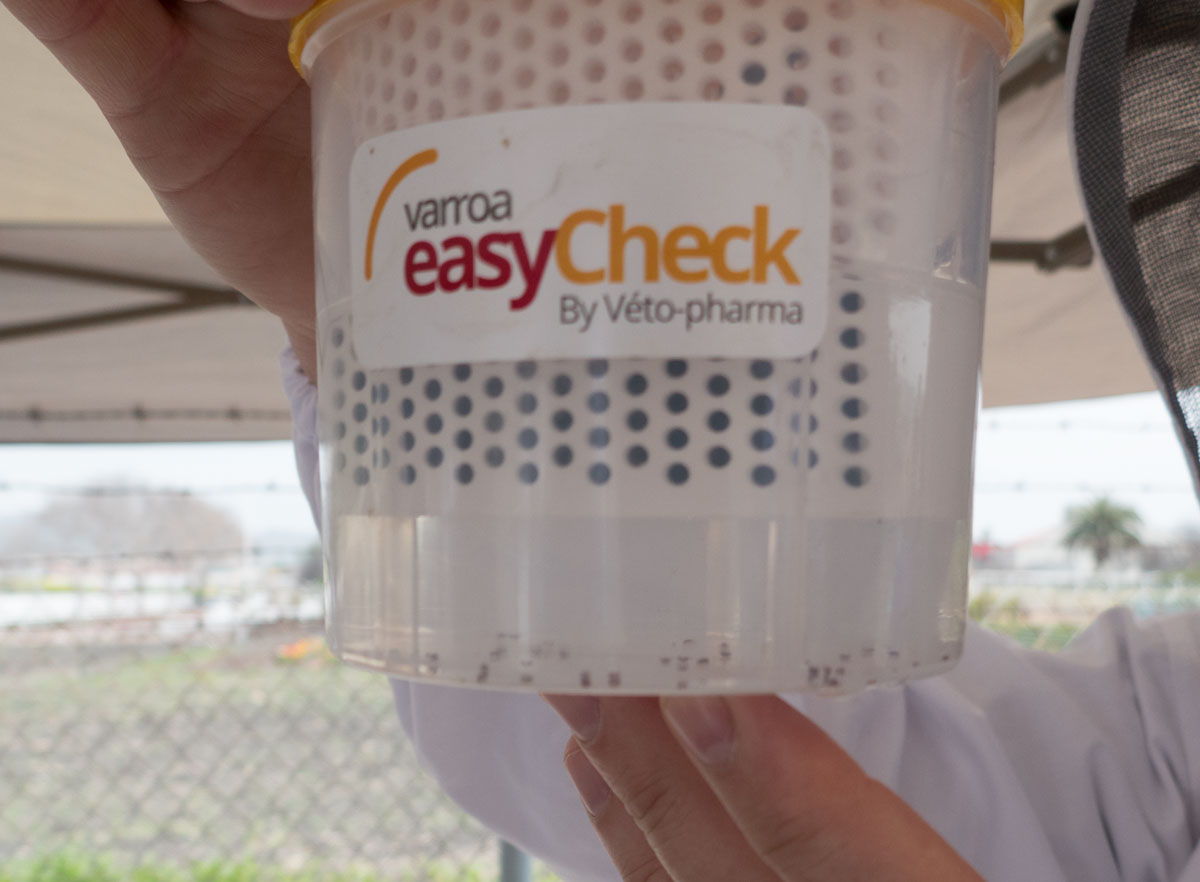
Then it was time for lunch back in the original hall. Lunch was a pre-prepared sandwich container with everything contained in the package. Soft drinks and bottled water was available to drink. After lunch we went back to the apiary.
The third session was on hive manipulation with Rob Stone.

He emphasized keeping the bees smoked, moving slowly, and not jarring the hive. He pointed out that you should look for brood and for sufficient pollen and honey stores. The hive we examined had good brood but had no capped honey. This was a surprise to me since my two new hives have laid in a lot of capped honey since I hived them in October. This hive must have been in a place without much nectar.
You can see the brood in this next picture. But the cells beyond the brood are not filled with honey and pollen. They may need some feeding.

The fourth session was on hive splitting by Jose Amezcua and John Reese. Basically, they took a hive that was full of bees and divided the frames and bees to make three hives.
Here's Jose (left) and John (behind Jose) getting ready to work the hive.

And here's a view into the hive after they had removed some of the frames. You can see that the hive is really full of bees and would have probably have swarmed soon.
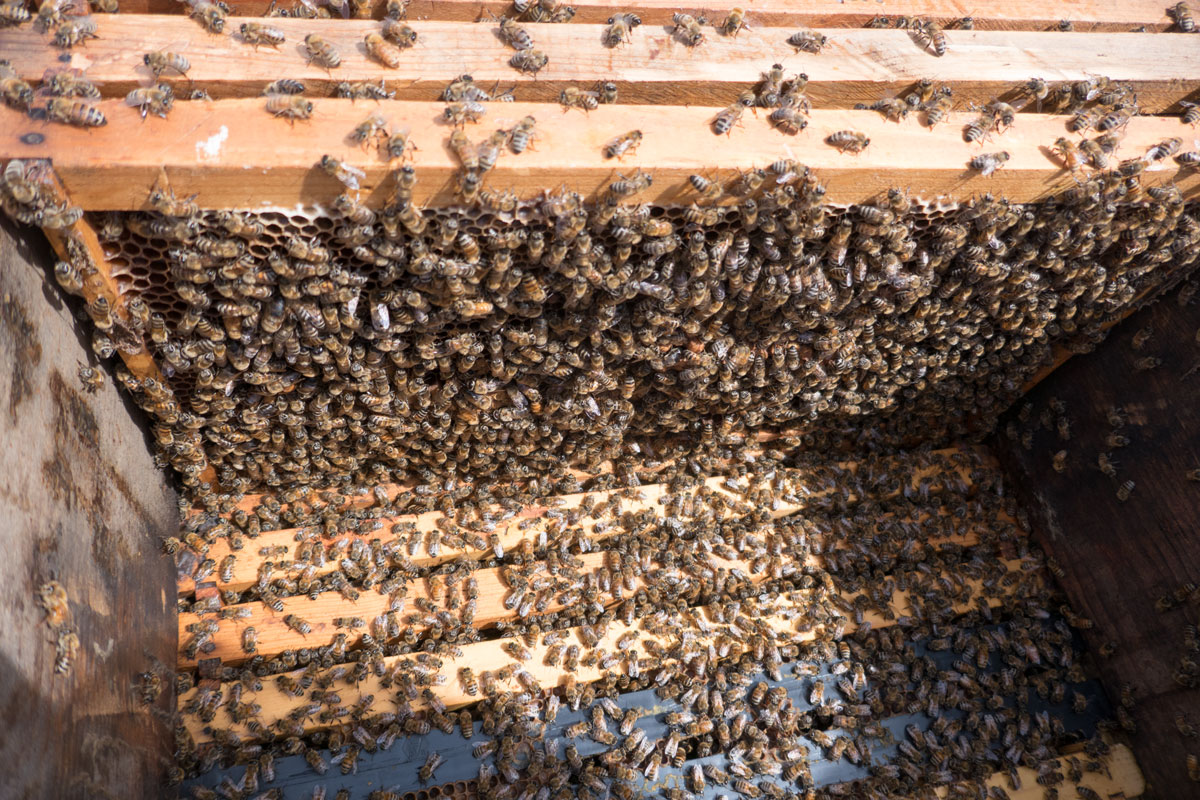
One of the three hives received the old queen, of course. But new queens had to be put into the other two hives.
While this doesn't have anything to do with the split, one of the students found this worker who had been collecting pollen. Just an interesting picture. The pollen is placed "baskets" on the bee's legs. Those baskets are called the corbicula. She's carrying a lot of pollen.
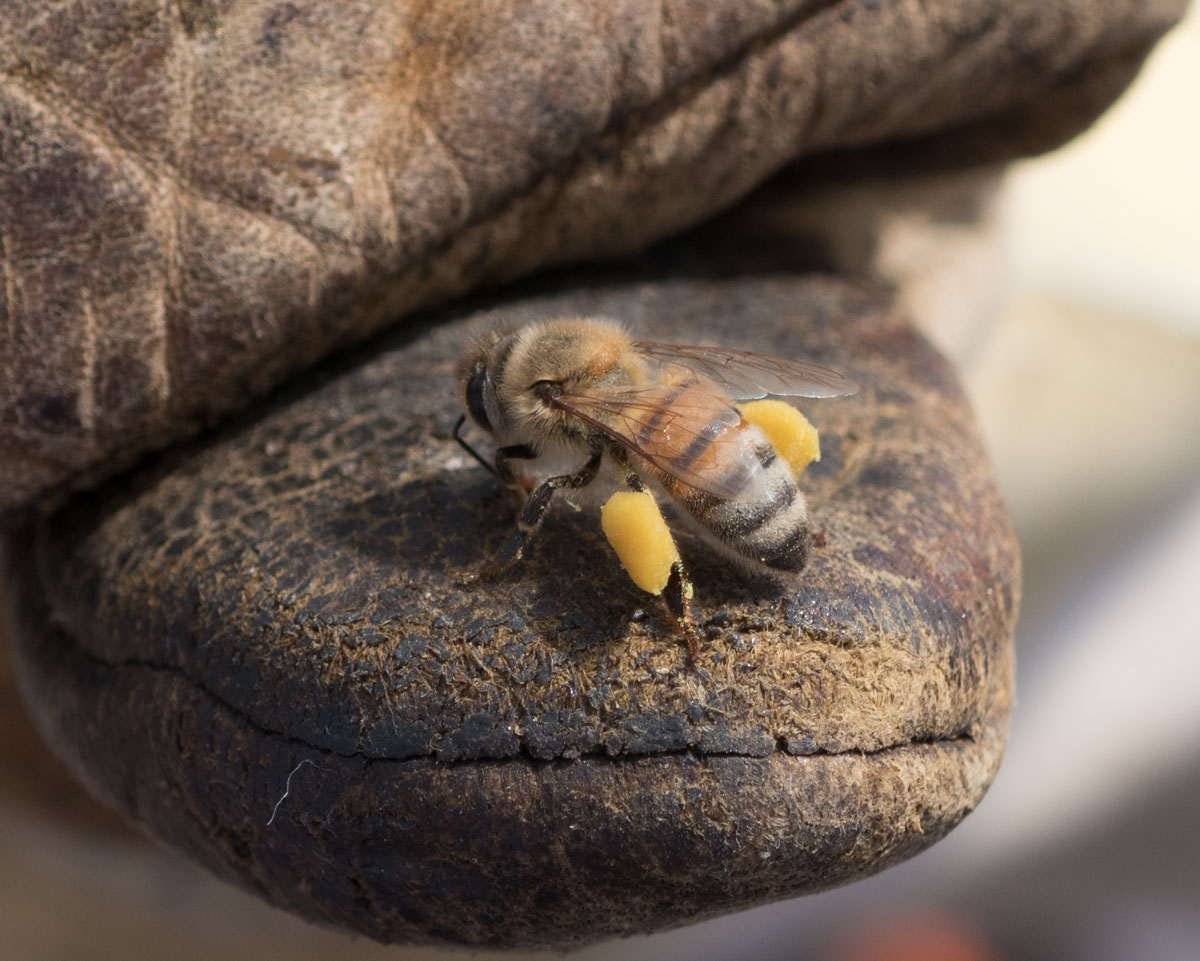
The fifth session was presented by Mark Haag and was on queen grafting. I won't try to describe the process but I was glad to learn how it's done. I do not have the grafting equipment, hives and skill to do queen raising at this time. Nor the need or interest.
Here's Mark removing a few days old larva from brood comb to place in a queen cup.
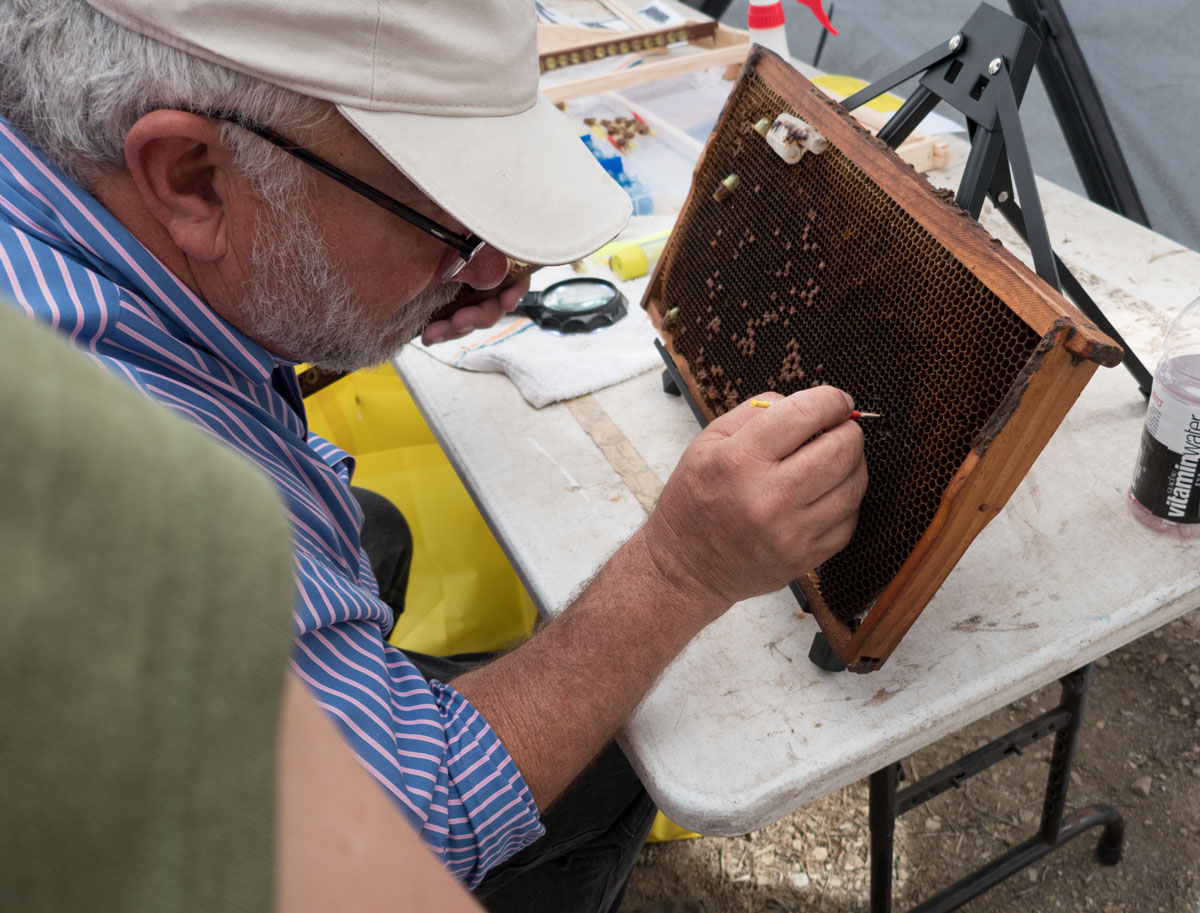
And here he is placing it into the queen cup.

That completed the seminar. I think most of the people got together for a wrap up in the main building but I headed home since my wife had to leave for an appointment that evening.
While this was my second attendance at a bee seminar at Cal Poly Pomona, I feel that I learned some new things. I was especially glad to see how queen grafting was done.